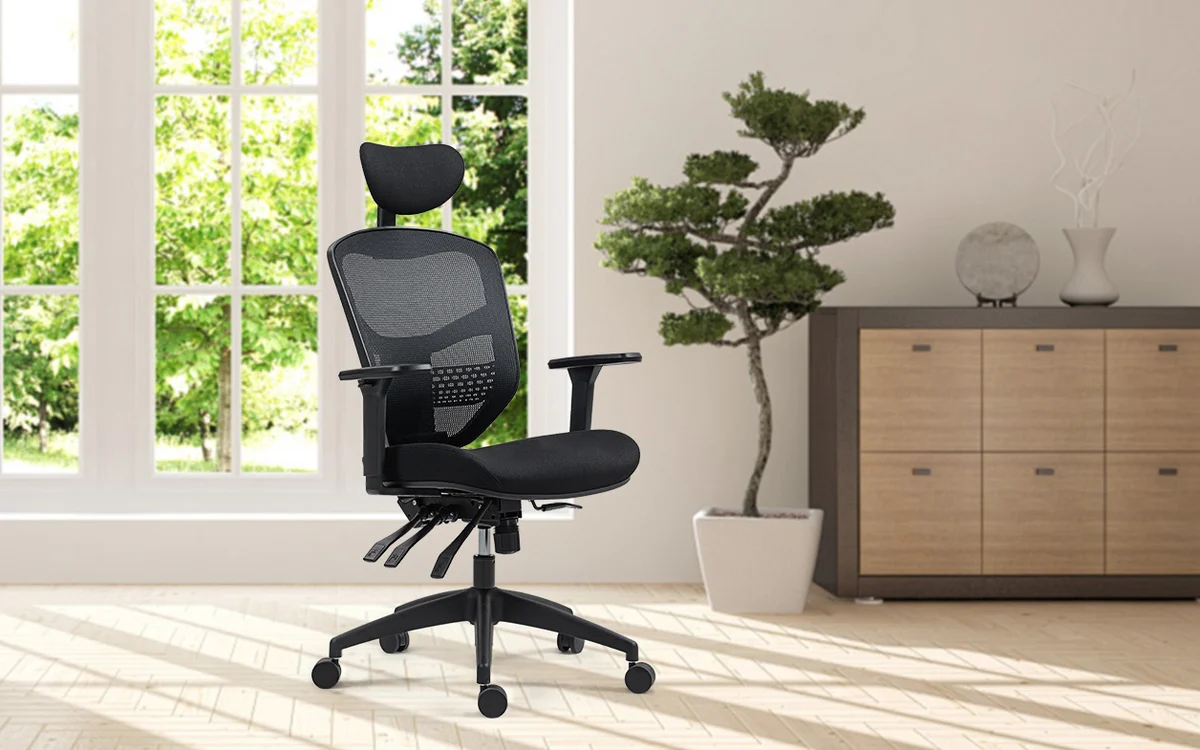By Abha Shah
Copyright standard

As DIY projects go, I’m not entirely hopeless.
I’ve put together a piston-engineered ottoman bed by myself, which, yes, took six hours as opposed to the instructions’ two-hour estimate, but it got done eventually. Panelling and painting the hallway? Completed it. I’ve never put together an office chair, but hey, after the bed-building marathon, how hard could it be?
Like millions, I spend my working week tapping away at a keyboard, around 40 hours, give or take. So, what I sit on is vital, both for focus and to stop my spine turning into a mini model of Nemesis Inferno. At Standard HQ, chairs have been professionally calibrated to make sure we’re all sitting in the optimum position. At home? I’ve got to watch my own back.
And so, a proper office chair had to cross the threshold. This one is from Boulies called the OP300 (catchy, I know).
It claims to provide ample support for extended periods making it perfect for working or gaming. A headrest allows you to lean back and stretch out fully, moving with your spine instead of restricting it. It is still an office chair, though, so castor wheels, piston adjustment and armrests are part of the picture.
Aesthetically, well, let’s just say only its mother would call it beautiful. But, when it comes to office chairs, the onus really is on substance over style. It’s better to put up with a slightly ugly chair that safeguards posture than a beautiful piece that takes up floor space but doesn’t do much else.
Boulies’ chair looks like a textbook office chair. The ergonomic chair comes with a multi-tilt mechanism that moves with you, whether you’re leaning forward to examine a spreadsheet or pushing back to ponder how to phrase a delicate email. The backrest can go from 85 – 104D, while the tall backrest, wide seat and headrest offer full body support with enough wiggle room so you don’t feel wedged in.
The whole shebang sits on a heavy-duty base wth five castor wheels so you can roll and twirl around the room when that banger comes on the radio.
The chair comes in a rather large box, so if you’re short on space, you’ll want to build it right away. The good news is that there’s no need to clear your diary – it took me 40 minutes from slicing into the parcel tape to sitting in the built chair.
It helps that the main hardware has already been fixed on; there are just a few bolts to screw in with an Allen key, and a set of castor wheels to push onto the base. Heaving the backrest onto the base was the fiddliest bit, requiring balancing the piece on my coffee table to line up the screws.
Six steps and just over half an hour later, I was sitting in the chair to test my handiwork. Much to my relief, the chair didn’t instantly explode underneath me (as happened to an unfortunate friend once on a wooden dining chair).
The marketing spiel checks out; this chair does offer total back support. The headrest above the seat back means you can stretch, lean right back and rest your full weight against it, giving your spine a welcome break from being hunched over a keyboard. The seat is wider than other office chairs, so it’s great for fidgety seaters like me who like to sit with one leg tucked under. I can even sit cross-legged comfortably.
Sitting upright, my lower back feels nicely supported by the ergonomic mesh cushions
Any gripes? I like my WFH set-up to feel invisible when I’m not working, so the height of this office chair makes that harder. I could remove the headrest if it really starts to bother me but I don’t find that extra effort necessary yet.
At just under £260, it’s not the cheapest work chair you can find – but it certainly feels among the most supportive I’ve tried.
If you’re a hybrid worker and will continue to be for the foreseeable, the RRP seems a small price to pay to keep your back supported when you’re hard at it at home.
Its comfort means I’d be happy to trundle it out as an extra seat for guests, so while it’s a bit of a living room eyesore, at least it will continue to come in handy after the 9-to-5.



